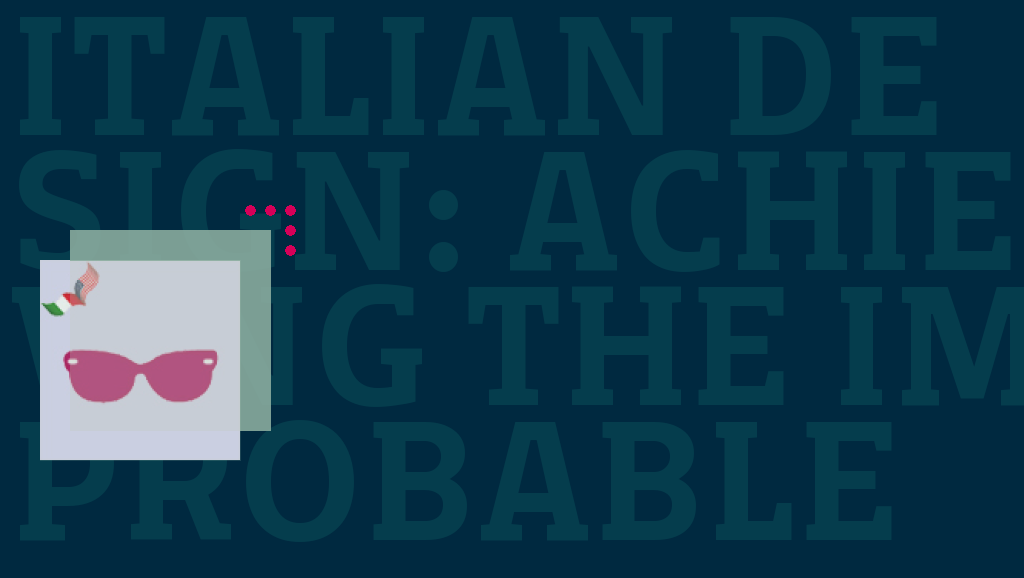Fondazione Giannino Bassetti for the Italian Year of Culture in the USA
Italian Design: achieving the improbable, innovating with beauty
San Francisco, 21-27 June 2013
Towards a new economy of beauty. Milan meets San Francisco
Artisanship, Technology, Design – From Taylorism to tailor made
On 28 February 2013 in Rome at the Farnesina, the Italian Minister for Foreign Affairs presented The Year of Italian Culture in the USA together with the US Secretary of State John Kerry. On the occasion it was highlighted how:
«…The guideline of the Year of Italian Culture in the USA is research, discovery and innovation. The objective is to present Italy as a country at the avant-garde of innovative modernity in science and high quality production techniques. Modern day excellence is drawn from the roots of an age old culture that has always been able to rise to the challenges that each change of thinking has brought.» (www.esteri.it)
Within this framework and in light of its 15 years of promoting responsibility in innovation, the Minister of Foreign Affairs has entrusted the Fondazione Bassetti the organization of a week of meetings and comparison between the cutting edge models of Italian production and the technology of Silicon valley, forming a new economy of beauty.
From 21st to 27th June 2013 «Fondazione Giannino Bassetti presents in San Francisco and the Bay the culture, the beauty and the innovation of made in Italy Design. A symposium, an exhibit through the history of Italian Design, a performance on its origins, a debate on the culture of high tech design» (taken from the official program of the Year of Italian Culture in the USA).
Collaborators include: Istituto di cultura italiana a San Francisco, California College of the Art, Academy of Art University, San Francisco Design Week, Hedge Gallery, Arkitektura, Gruppo Frau, The Renaissance Link, Deutsche Bank Italia, Design Group Italia, Triennale Milano [others to be added].
The renaissance myth of the creation of new worlds tied together literature, art and politics. The passage to the modern era «is the fruit of art and human will. In each case we have a world that is created by man and of which artwork is the symbol» (Giuseppe Mazzotta). The heritage of the renaissance artisan workshop is still here before our eyes, in the street names in Milan – the Armorari and Spadari that produced weapons of war, table knives and needles for Emperor Carlo V – as much as amongst the modern day furniture and silk workers.
Over the last century, the ideas of architects and engineers have come together in artisan studios and workshops, taking new materials and ‘creating’ design. Lombardy and Milan in particular are still the centres of excellence in this process today. The world still recognizes and appreciates our cultural ability to understand and represent how an object’s relationship to a person counts more than the object itself: design is poetry, because it is human potential.
Immersed in this century long tradition, but with our feet firmly on the ground, we have learned to recognize – alongside technoscientific innovation – the Poiesis intensive developments that bring together creativity and technology and continue to characterize an italic form of presenting within the scene.
This is one necessary condition – albeit not sufficient – to confront a production revolution, that advancing from the US proposes «the invention of the world» over the next few decades. A profound transformation of manufacturing and the role of the new artisan is in course. An artisanship looking toward the future, ever more needy of technology, reputation and finance.
We are seeing a new relationship between atoms and bits:
«Just as the World Wide Web has democratized bit technology innovation, a new class of technology that allows rapid prototype production today – and includes 3D printers and laser cutters – is democratizing the innovation of atoms (…) Despite the allure that screens exercise upon us each day, we still live in the real world. The food we eat, our homes, the clothes we wear and the cars we drive. Our cities and our gardens, our offices and back yards. They are all atoms, not bits» (Chris Anderson).
Fondazione Giannino Bassetti accepts the challenge, and has for some time been working to convince Milan and Italy to take a road towards the economy of beauty. Not to replicate the status quo, but to foresee a scenario beyond the contingent, something improbable to achieve (the image that best represents innovation for us).
Through different expressive forms, from talks to exhibitions and lectures, we want to draw back the curtain upon a comparison between the multiple forms of creativity and innovation found in Milan and its Region and San Fransisco and the Bay Area, to recount the story of artisanship and design as ‘new ways of working’: a lesson of style and technique available to a culture of work invigorated by the opportunities of the 21st century.
We are promoting discussion between intellectuals from Italy and the USA; between artisan workshops and laboratories of “makers”; between systems of interest, companies, and networks of actors on both sides of the Ocean.
————–
















